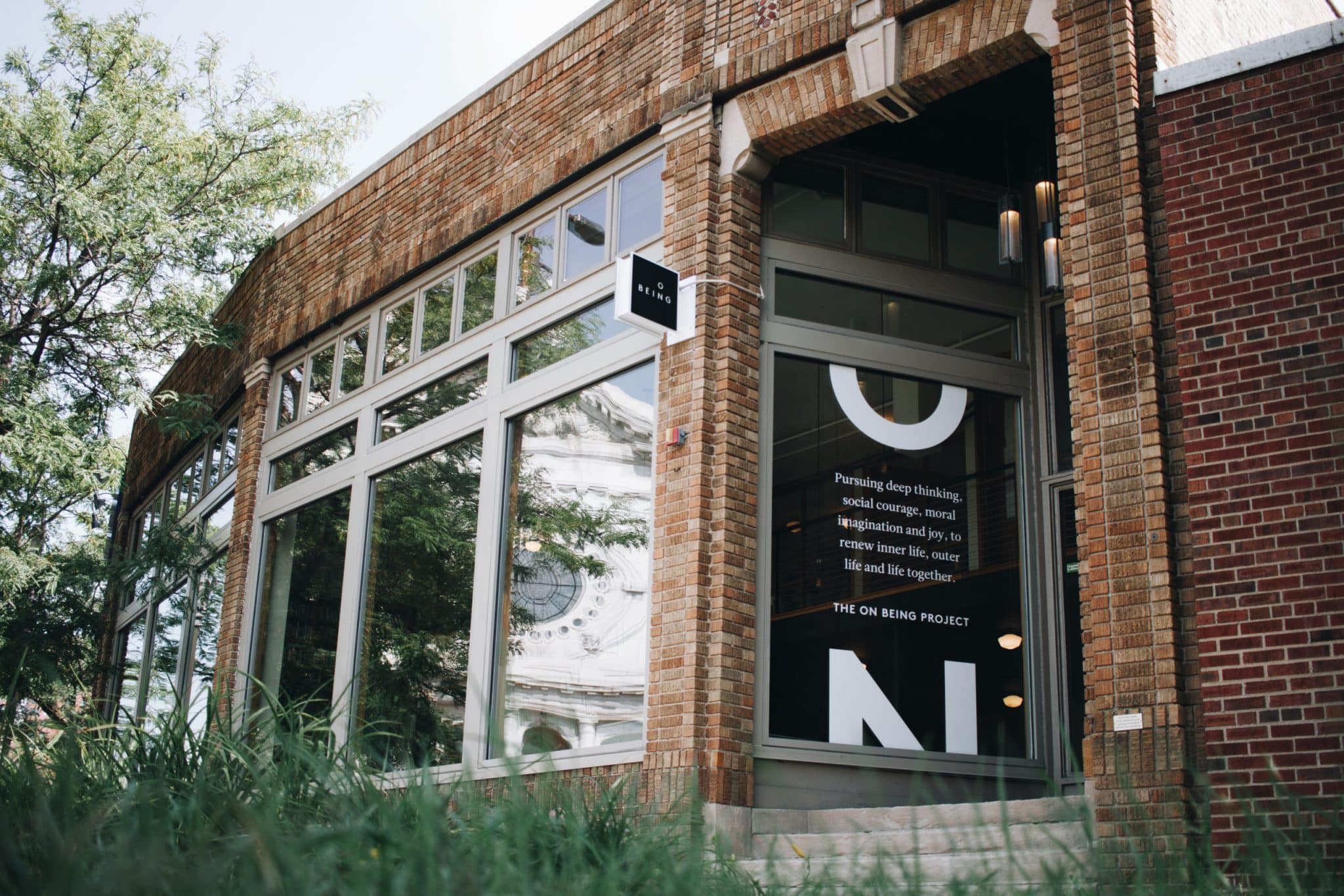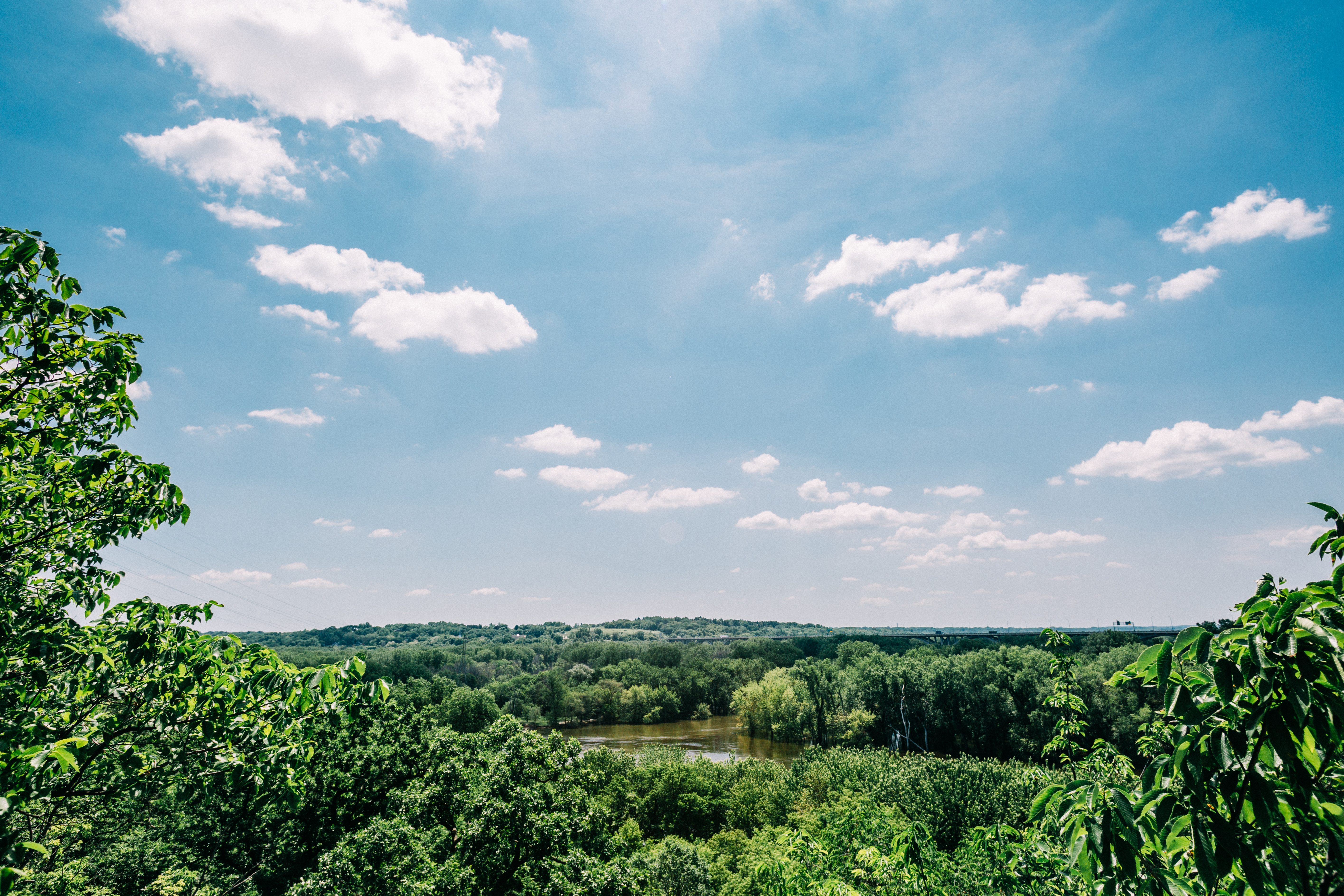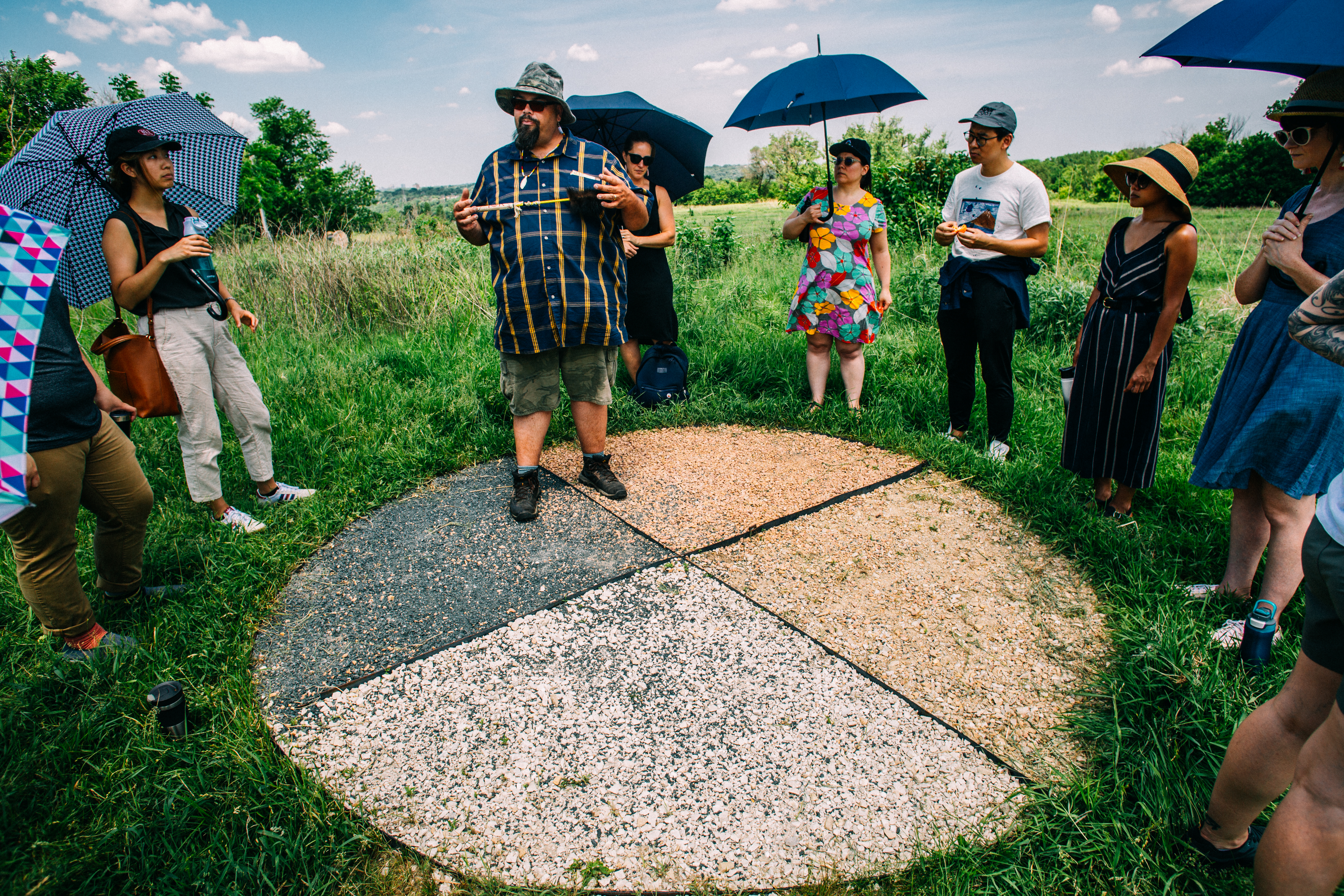The On Being Project is located on Dakota land.

About 12 miles away from The On Being Project’s central office, the Minnesota River joins the Mississippi River at a place called Bdote.
In Dakota, one translation of “bdote” is “where two waters come together,” and the bdote where the Mississippi and Minnesota Rivers concur is an especially sacred site — the center of the world to the Dakota.

Bdote is a place that carries a complicated and layered history, in the thousands of years the Dakota people have been in relationship and kinship with the land here, and in the several hundred years since European settlers colonized the land that the state of Minnesota now occupies. The United States’ land seizures were a project of spiritual destruction that denied the Dakota free and unhindered access to the land that fundamentally shapes their identity and spirituality.
Today, 11 reservations are located within the state of Minnesota: four Dakota communities in the southern portion of the state and seven Ojibwe communities in the north. The On Being Project pays tribute to the Dakota and Ojibwe.

We invite you to consider the land on which you live and the confluence of legacies that bring you to stand where you are — particularly through critical reflection and conversation with your own community. We encourage you to use the resources below to assist in your exploration.
On the practice of land acknowledgment:
- Native Land Map — a community-powered resource that helps identify what Native land you are on
- “Why Treaties Matter” – learn from Native scholars about land treaties, including what they are, why they were signed, and how they continue to impact the United States
- A Guide to Indigenous Land Acknowledgment – considerations for writing your own land acknowledgment, synthesized from a panel of Native scholars, artists, and activists
- Honor Native Land: A Guide — a step-by-step guide for writing a land acknowledgment
On Native American culture and history in Minnesota:
- Bdote Memory Map – a wonderful resource for the Twin Cities that weaves together oral histories of important sites in the area.
- Mni Sota Makoce: The Land of the Dakota — a book that paints an intricate narrative of the Dakota people over the centuries in their traditional homelands and the stories behind the profound connections to the land that hold true today
- Dakota 38 – a documentary that follows Native riders on a 330-mile healing journey from South Dakota to Minnesota in honor of those lost in the largest mass execution in U.S. history
- Why Treaties Matter – a comprehensive and thoughtful exploration of the history of treaties and land seizure in Minnesota
- Why Treaties Matter Resource Guide – a comprehensive list of additional resources specific to Minnesota
- Attend a sacred sites tour – Native-led sacred sites tours can be a fantastic orientation to the land that makes up the Twin Cities. Two options are Healing Minnesota Stories and Learning from Place: Bdote
Related On Being interviews:
- Layli Long Soldier — The Freedom of Real Apologies
- David Treuer — Language Carries More Than Words
We are deeply grateful to the following individuals for contributing their time and perspective to helping us put together this acknowledgment:
- Marty Case, scholar of Native American history, designer for Why Treaties Matter
- Sharon Day, Ojibwe, executive director, Indigenous Peoples Task Force
- Adam Horowitz, founder, U.S. Department of Arts and Culture
- Jim Bear Jacobs, Stockbridge-Munsee Mohican, Healing Minnesota Stories
- Mary LaGarde, White Earth, executive director, Minneapolis American Indian Center
- Marlena Myles, Spirit Lake Dakota, artist
- Mona Smith, Dakota, artist and founder of Healing Place Collaborative
- Sohrob Nabatian, director of grantmaking, Kalliopeia Foundation
- Waziyatawin, Dakota, scholar and writer
- Stephanie Hope Smith, mediator
Search results for “”
View
- List View
- Standard View
- Grid View
Filters